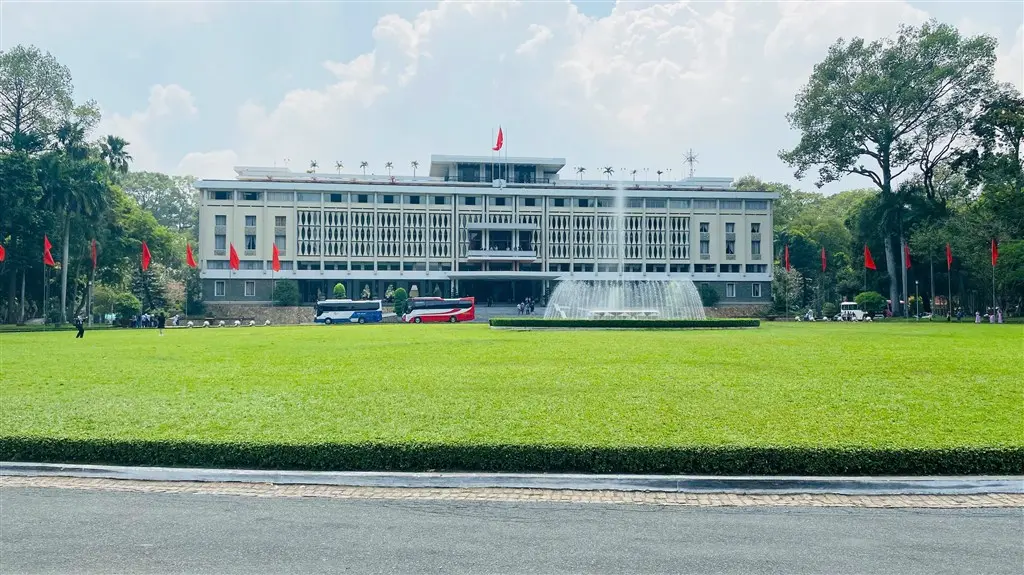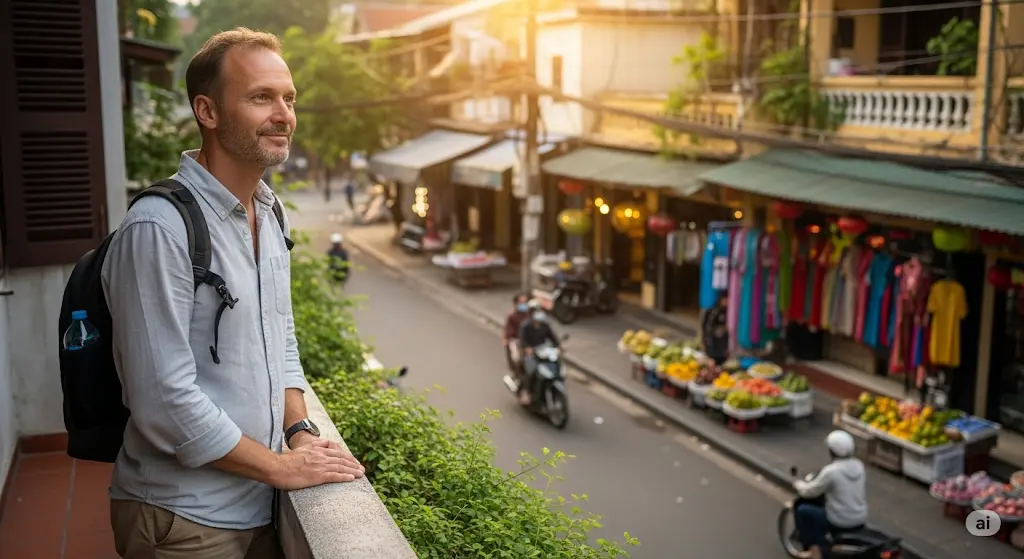Vietnam, a nation in Southeast Asia, boasts a rich tapestry of history, culture, and stunning natural landscapes. This heritage is internationally recognized through several UNESCO World Heritage Sites. These locations offer profound insights into the country’s past, its vibrant traditions, and its breathtaking natural beauty.
EssentialVietNamtravel.com is here to guide you through these remarkable world heritage sites in vietnam, ensuring you have all the information needed for an enriching experience. Understanding these vietnam unesco sites is key to appreciating the depth of heritage in vietnam. This guide will help you list recognized sites, learn about specific sites, and plan a visit.
Official List of Vietnam World Heritage Sites: Your Guide to Vietnam’s UNESCO Sites
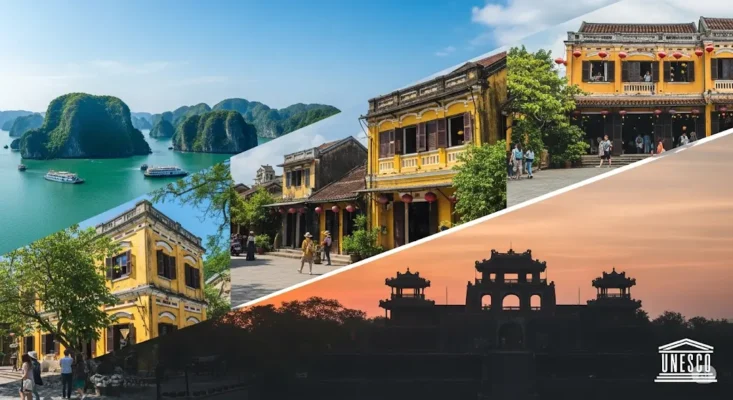
The United Nations Educational, Scientific and Cultural Organization (UNESCO) designates locations of “outstanding universal value” as World Heritage Sites. This UNESCO recognition signifies a place’s importance to the collective heritage of humanity. Vietnam is proud to host a number of these treasured sites, a testament to its long history and diverse geography. These unesco world heritage sites in vietnam are not just tourist attractions; they are symbols of cultural preservation and natural wonder, carrying deep historical significance. For anyone interested in Southeast Asian history or global heritage, exploring vietnam’s UNESCO sites is a rewarding journey.
Currently, Vietnam has eight properties inscribed on the UNESCO World Heritage List. These sites represent both the natural splendor and the rich Vietnamese culture. They offer a journey through time, from ancient civilizations to imperial dynasties, and showcase some of the planet’s most spectacular natural landscapes. The Global Heritage represented by these locations is immense. EssentialVietNamtravel.com provides this overview to help you begin your exploration of heritage of vietnam.
The List of Vietnam World Heritage sites includes:
- Ha Long Bay: A stunning natural wonder known for its emerald waters and thousands of towering limestone islands.
- Complex of Hue Monuments: The former imperial capital, reflecting the power and artistry of the Nguyen Dynasty.
- Hoi An Ancient Town: A well-preserved Southeast Asian trading port dating from the 15th to the 19th century.
- My Son Sanctuary: An ancient complex of Champa temples, revealing a unique ancient civilization.
- Phong Nha-Ke Bang National Park: Famed for its ancient karst formations and extensive cave systems.
- Imperial Citadel of Thang Long (Hanoi): A site with a continuous history as a center of regional political power for over a thousand years.
- Citadel of the Ho Dynasty: A unique stone citadel from the late 14th century, showcasing innovative construction.
- Trang An Landscape Complex: A mixed heritage site with dramatic karst scenery and significant archaeological traces of human activity.
These vietnam world heritage locations are protected areas, managed by the government with support and guidelines from UNESCO. They are not unrecognized sites or neglected sites; instead, they are celebrated examples of cultural preservation and natural marvels. Each unesco vietnam site possesses outstanding universal value, a core criterion for inscription. Visiting them provides a unique window into Vietnam history and its contribution to world heritage. We encourage travelers to explore these historical places Vietnam offers, as they are vital parts of the heritage vietnam cherishes.
Exploring Ha Long Bay: Vietnam’s Celebrated Natural World Heritage Site and Travel Destination
Ha Long Bay, located in Quang Ninh Province, is arguably one of the most iconic natural world heritage sites in vietnam list. Its name translates to “Descending Dragon Bay,” and its landscape is truly legendary. Thousands of limestone karsts and isles, in various shapes and sizes, rise dramatically from the emerald waters of the Gulf of Tonkin. This natural beauty has captivated visitors for centuries and earned its UNESCO recognition in 1994 for its exceptional aesthetic importance and again in 2000 for its geological and geomorphological value. Ha Long is a must-see Vietnam travel destination.
The bay’s karst landscapes were formed over millions of years through complex geological processes. The result is a seascape of immense beauty, dotted with grottoes, caves, and secluded beaches. Popular activities in Ha Long Bay include taking a cruise, which can range from a few hours to several days. These cruises often navigate through the towering formations, stopping at points of interest. Kayaking allows for a more intimate exploration of the bay’s nooks and crannies, bringing you closer to the limestone giants and tranquil lagoons.
Cave exploration is another highlight; Thien Cung Cave (Heavenly Palace Cave) and Dau Go Cave (Wooden Stakes Cave) are among the most visited, showcasing impressive stalactites and stalagmites. The natural landscapes here are unparalleled.
Planning a trip to this natural world heritage site requires some consideration. The best time to visit world heritage sites in vietnam, particularly Ha Long Bay, is generally during the spring (March-May) or fall (September-November) when the weather is pleasant. Summer can bring heat and occasional storms, while winter can be cool and misty. There are numerous types of cruises available, from budget-friendly options to luxurious liners.
Consider the duration, onboard amenities, and planned itinerary when choosing. Many visitors access Ha Long Bay from Hanoi, a journey of a few hours by road. Remember, this is a precious natural environment. Responsible tourism is key to its conservation efforts. As a Category,Natural site, its preservation is paramount. Engaging in Boat Tours is a common way to experience its grandeur.
Planning Your Ha Long Bay Adventure
To effectively plan your visit to Ha Long Bay, start by deciding on your mode of transport from major cities like Hanoi. Many tour operators offer package deals that include bus or private car transfers. Upon arrival in Quang Ninh Province, you’ll find various harbors, such as Tuan Chau or Hon Gai, where cruises depart.
Choosing the right cruise is crucial for your experience. Options include day trips, one-night, or two-night cruises. Longer cruises typically venture further into less crowded areas of the bay and may include visits to Bai Tu Long Bay or Lan Ha Bay, which are equally stunning parts of the larger Ha Long Bay area. Research cruise operators for their safety records, environmental policies, and customer reviews. Check what activities are included: kayaking, swimming, cave visits, cooking demonstrations, or tai chi sessions.
When packing, include swimwear, sunscreen, a hat, and comfortable walking shoes for cave explorations. A light jacket is advisable, even in warmer months, as evenings on the water can be cool. Most importantly, be a responsible tourist. Avoid littering, do not purchase souvenirs made from coral or other marine life, and follow the guidance of your tour operator to minimize your impact on this delicate ecosystem. The conservation efforts here depend on visitors’ respect for this magnificent natural world heritage site.
Discovering Hoi An Ancient Town and My Son Sanctuary: Vietnam’s Key Cultural Landmarks

Central Vietnam is home to two remarkable cultural world heritage sites in vietnam: Hoi An Ancient Town and My Son Sanctuary. These sites, though distinct, are historically linked, primarily through the influence of the Champa Kingdom, an ancient civilization that flourished in this region. Exploring them offers a deep dive into Vietnam’s rich past and its fusion of cultures.
Hoi An Ancient Town, located in Quang Nam province, is an exceptionally well-preserved example of a Southeast Asian trading port active from the 15th to the 19th century. Its architecture and street plan reflect a blend of indigenous and foreign influences – Chinese, Japanese, and European – creating a unique urban landscape. Walking through Hoi An is like stepping back in time. Key landmarks include the iconic Japanese Covered Bridge, centuries-old merchant houses, Chinese assembly halls, and colorful temples.
Hoi An Ancient Town was Recognized for its cultural significance and inscribed by UNESCO in 1999. Beyond its ancient architecture, Hoi An is a vibrant town. Visitors can enjoy custom tailoring, participate in cooking classes, explore local markets, and witness the magical lantern festival held monthly during the full moon. Its Historical Period,15th-19th Century is palpable in every alleyway.
A short drive from Hoi An lies My Son Sanctuary, a complex of ruined Hindu temples constructed between the 4th and 14th centuries by the Champa people. My Son served as the political and religious capital of the Champa Kingdom. The temples, dedicated primarily to the Hindu god Shiva, showcase sophisticated brickwork and intricate stone carvings.
Though many structures were damaged by bombing during the Vietnam War, significant ruins remain, nestled in a lush green valley. My Son Sanctuary provides crucial insights into the spiritual life and artistic achievements of the Champa civilization, with clear Religious Influence,Hinduism. UNESCO recognized My Son in 1999 for its cultural importance and its representation of the Champa Kingdom. The conservation efforts here are ongoing and vital for preserving these Temples for future generations. Both Hoi An and My Son are essential Vietnam cultural landmarks.
Experiencing Hoi An’s Charm and My Son’s Mystique
To fully experience Hoi An Ancient Town, the best approach is on foot or by bicycle. The core ancient town area is largely pedestrianized, making it pleasant to wander through its narrow streets, discover hidden courtyards, and admire the architecture. Purchase a ticket that grants access to several key historical buildings. Allow at least a full day, or preferably two, to soak in the atmosphere, visit artisan shops, and enjoy the diverse culinary scene. Consider a boat trip on the Thu Bon River, especially at sunset.
My Son Sanctuary is typically visited as a half-day trip from Hoi An or nearby Da Nang. You can hire a private car, take a motorbike (if experienced), or join an organized tour. Guided tours are beneficial as they provide essential historical context and explanations of the Champa art and architecture, which might be missed by an independent visitor. The site is best visited early in the morning or late afternoon to avoid the midday heat and crowds. Wear comfortable shoes, as you will be walking over uneven terrain. Understanding the Champa Kingdom‘s legacy enhances the visit to both these cultural world heritage sites in vietnam.
The Imperial Citadel of Thang Long and Hue Monuments: Uncovering Vietnam’s Historical Places
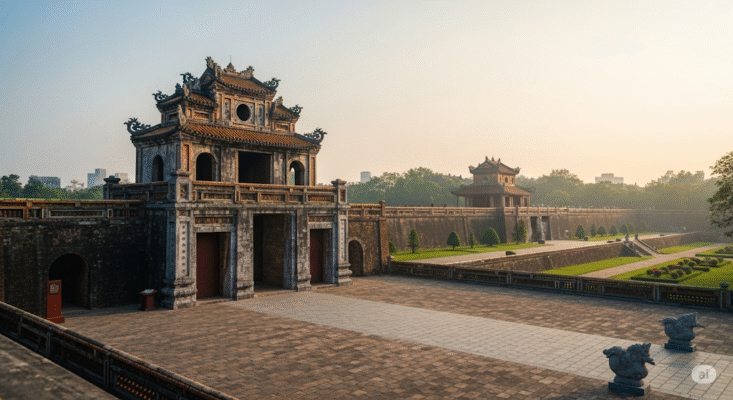
Vietnam’s long and storied imperial history is vividly represented by two major UNESCO World Heritage Sites: the Imperial Citadel of Thang Long in Hanoi and the Complex of Hue Monuments in central Vietnam. These historical places Vietnam offers provide unparalleled insights into the country’s past imperial grandeur and political evolution. The Citadel of the Ho Dynasty, while from an earlier period, also contributes to this narrative of Vietnam history.
The Imperial Citadel of Thang Long, located in the heart of Hanoi, stands on the site of a former Chinese fortress from the 7th century. It became the center of regional political power for over thirteen centuries, serving as the capital of Vietnam under several dynasties, including the Ly, Tran, and Le. Excavations at the site have unearthed a wealth of artifacts and architectural foundations, revealing layers of history.
Key features include the imposing Doan Mon (Main Gate), the Kinh Thien Palace foundation, and relics from various imperial eras. The Imperial Citadel of Thang Long was recognized by UNESCO in 2010, acknowledging its continuous role as a seat of power and its rich archaeological discoveries. This historical place in vietnam is a cornerstone of Vietnam history.
Further south, the Complex of Hue Monuments served as the political, cultural, and religious center of Vietnam under the Nguyen Dynasty, the country’s last imperial family, from 1802 to 1945. Located on the banks of the Perfume River, Hue boasts a vast collection of palaces, temples, fortifications, and royal tombs. The centerpiece is the Imperial City, a walled fortress containing the Forbidden Purple City, which was the emperor’s private residence.
Notable sites within the complex include the Ngo Mon Gate, Thai Hoa Palace, and the elaborate tombs of emperors like Minh Mang, Khai Dinh, and Tu Duc. The Hue Monuments reflect a unique blend of traditional Vietnamese architecture, Confucian ideology, and French colonial influences. UNESCO inscribed the Complex of Hue Monuments in 1993 for its outstanding example of an eastern feudal capital and its demonstration of imperial history. These vietnam historical places are truly magnificent.
Briefly, the Ho Dynasty Citadel, recognized in 2011, offers another perspective. Built in 1397, its massive stone walls, constructed using large Primary Material,Stone Blocks, demonstrate remarkable engineering skills for its time and unique Feng Shui Principles in its design. Though the Ho Dynasty was short-lived, their citadel is a significant architectural achievement.
Stepping Back into Vietnam’s Imperial Eras
Visiting the Imperial Citadel of Thang Long in Hanoi offers a journey through millennia of Vietnam history. Allocate at least half a day to explore the main structures and the on-site museum, which houses many excavated artifacts. The site is centrally located and easily accessible. Consider a guided tour to better understand the layers of history and the significance of different areas within the citadel. The Recognition Year,2010 by UNESCO highlighted its continuous historical importance.
Exploring the Complex of Hue Monuments requires more time, often one to two full days, due to its expansive nature. The Imperial City itself can take several hours. The royal tombs are located a few kilometers outside the city center, often along the Perfume River, and can be reached by taxi, motorbike, or a dragon boat cruise. Each tomb has a unique design reflecting the personality of the emperor it honors.
The Key Attraction,Forbidden Purple City within the Imperial City, though heavily damaged, offers a glimpse into royal life. Conservation efforts are crucial for these large-scale historical sites of vietnam, preserving the legacy of the Nguyen Dynasty and other imperial periods.
The Deep Significance of Vietnam’s Protected Areas and UNESCO Recognition
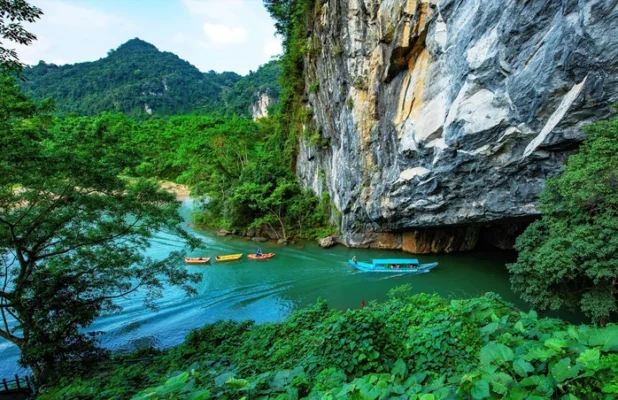
Beyond the purely cultural and historical, Vietnam’s UNESCO World Heritage Sites also include areas of profound natural and geological importance. Phong Nha-Ke Bang National Park and the Trang An Landscape Complex are prime examples of Vietnam protected areas that have gained UNESCO recognition for their exceptional universal value. These sites underscore the importance of conservation efforts and the role of UNESCO in vietnam in safeguarding such irreplaceable treasures.
Phong Nha-Ke Bang National Park, located in Quang Binh Province, is a realm of dramatic karst mountains, dense tropical forests, and one of the world’s most extensive and spectacular cave systems. Recognized by UNESCO in 2003 (and expanded in 2015) for its geological values, the park is home to the oldest karst landscapes in Asia, dating back some 400 million years. Its Main Feature,Karst Caves are legendary.
Son Doong Cave, considered the world’s largest by volume, is found here, along with other magnificent caverns like Paradise Cave (Thien Duong) and Phong Nha Cave. The park also boasts significant biodiversity. The Unique geological formations and vast underground rivers make it a focal point for scientific research and adventure tourism. The Notable Cave,Son Doong draws explorers from around the globe.
The Trang An Landscape Complex in Ninh Binh Province, often dubbed “Ha Long Bay on land,” was inscribed as a mixed heritage site by UNESCO in 2014. This designation acknowledges both its stunning natural beauty – characterized by towering limestone karsts draped in lush vegetation, emerging from tranquil waterways – and its rich cultural and historical significance.
Archaeological excavations within Trang An have revealed evidence of human occupation dating back over 30,000 years, making it an important site for archaeology in Vietnam. The serene boat tours through caves and past temples nestled at the foot of the karsts offer a unique and peaceful experience. Its Heritage Type,Mixed status reflects this blend of nature and culture.
The UNESCO recognition of these sites brings numerous benefits. It raises global awareness, encourages tourism, and often leads to increased funding and support for cultural preservation and conservation efforts. The UNESCO logo itself is a symbol of quality and importance. However, this also brings challenges, particularly the need to manage tourism impact sustainably. The United Nations, through UNESCO, plays a vital Governing Body role by setting standards and providing expertise.
The World Heritage Committee‘s Function,Inscription process ensures that only sites meeting strict criteria for authenticity, integrity, and exceptional universal value are recognized. Preservation is necessary to protect these sites, and international cooperation is beneficial in achieving this. These sites attract visitors and significantly contribute to national identity. They are examples of Cultural Heritage to be cherished.
Planning Your Journey: Tips for Heritage Tourism at Vietnam’s UNESCO Sites
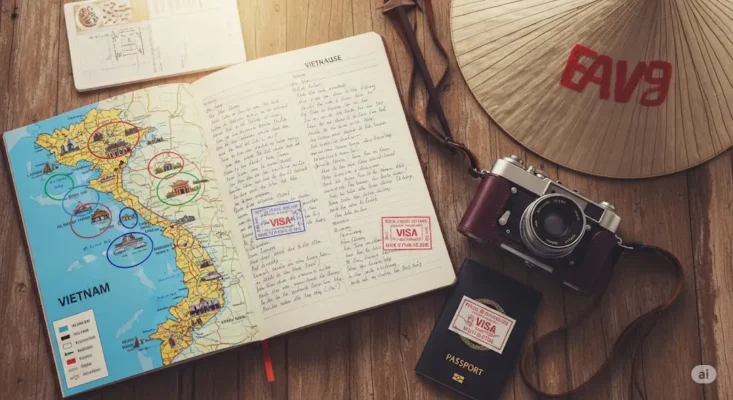
Embarking on a journey to explore the world heritage sites in vietnam is an adventure filled with discovery. Proper planning can greatly enhance your experience of heritage tourism Vietnam. EssentialVietNamtravel.com offers these practical tips to help you plan a visit and make the most of your trip to these significant vietnam unesco world heritage sites.
The best time to visit world heritage sites in vietnam can vary. Vietnam has a diverse climate. For northern sites like Ha Long Bay and the Imperial Citadel of Thang Long, spring (March-April) and autumn (September-November) offer pleasant weather. Central Vietnam, home to Hue, Hoi An, My Son, and Phong Nha-Ke Bang, is generally good from February to August, though it can get very hot in mid-summer. Always check specific weather patterns for your intended travel dates.
A map of world heritage sites in vietnam reveals their geographical spread. Ha Long Bay and the Imperial Citadel are in the north. Phong Nha-Ke Bang, Hue, My Son, Hoi An, and the Ho Dynasty Citadel are in the central region. Trang An is also in the north, not far from Hanoi. Consider this distribution when planning your itinerary. You might focus on a specific region or plan a longer trip to cover sites across the country.
Entrance fees for world heritage sites in vietnam are common and contribute to their upkeep and conservation efforts. Fees vary by site. It is advisable to check the latest fee information on official tourism websites or at the site entrances, as they can change. Some sites may offer combination tickets or discounts.
Transportation between these vietnam historical sites depends on distance and your budget. Domestic flights connect major cities like Hanoi, Da Nang (for Hoi An, Hue, My Son), and Dong Hoi (for Phong Nha-Ke Bang). Trains and long-distance buses are more economical options for overland travel. Within cities or near sites, taxis, ride-hailing apps, or hired drivers are available.
Start Planning Your Vietnam Heritage Tour!
Find the best flight deals to connect between Hanoi, Da Nang, and Dong Hoi. A smart itinerary starts with smart booking.
Accommodation options near vietnam unesco sites range from budget guesthouses to luxury resorts. Booking in advance is recommended, especially during peak tourist seasons. Consider staying in locations that offer easy access to the sites and local amenities.
Respectful tourism is paramount. When visiting cultural sites Vietnam, dress modestly (cover shoulders and knees, especially at religious sites like My Son or Hue’s pagodas). Be mindful of local customs. At natural sites, follow marked trails, do not litter, and avoid disturbing wildlife. The educational role of these sites is immense; take time to learn about their history and significance.
Your responsible behavior helps ensure that tourism affects preservation positively, supporting local community involvement and the economic benefits tourism can bring, rather than leading to destroyed sites or neglected sites. The goal is to maintain these places far from the status of unlisted sites or modern constructions encroaching upon their integrity.
Making the Most of Your Vietnam Heritage Tour
To make the most of your heritage tourism Vietnam experience, start by creating a realistic itinerary. Don’t try to cram too many world heritage sites in vietnam into a short trip. Allocate sufficient time for each location to truly appreciate its value and understand historical significance. For example, Ha Long Bay typically benefits from an overnight cruise, while exploring the full Complex of Hue Monuments can take two days.
Decide whether you prefer booking organized tours or traveling independently. Tours can be convenient, often including transportation, guides, and entrance fees, which is helpful if you want to find locations on map easily. Independent travel offers more flexibility. Many vietnam unesco world heritage sites are accessible on your own, but for sites like My Son Sanctuary or Phong Nha-Ke Bang’s caves, a guide can significantly enhance understanding.
Learning a few basic Vietnamese phrases like “Xin chào” (hello) and “Cảm ơn” (thank you) will be appreciated by locals and can enrich your interactions. Always carry a copy of your passport and visa. Stay hydrated, especially in hot weather, and be aware of food and water safety.
For the most current information on opening hours, entrance fees for world heritage sites in vietnam, and any travel advisories, consult official Vietnam tourism websites or the official websites of the specific heritage sites if available. Reputable travel agencies and local tourist information centers can also provide up-to-date details. Your journey through Vietnam’s UNESCO sites will undoubtedly be a memorable one, filled with awe-inspiring natural beauty, profound cultural value, and a deeper appreciation for the country’s rich heritage of vietnam.

